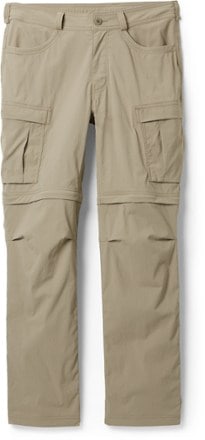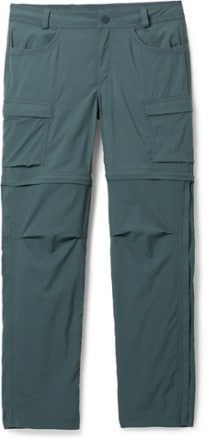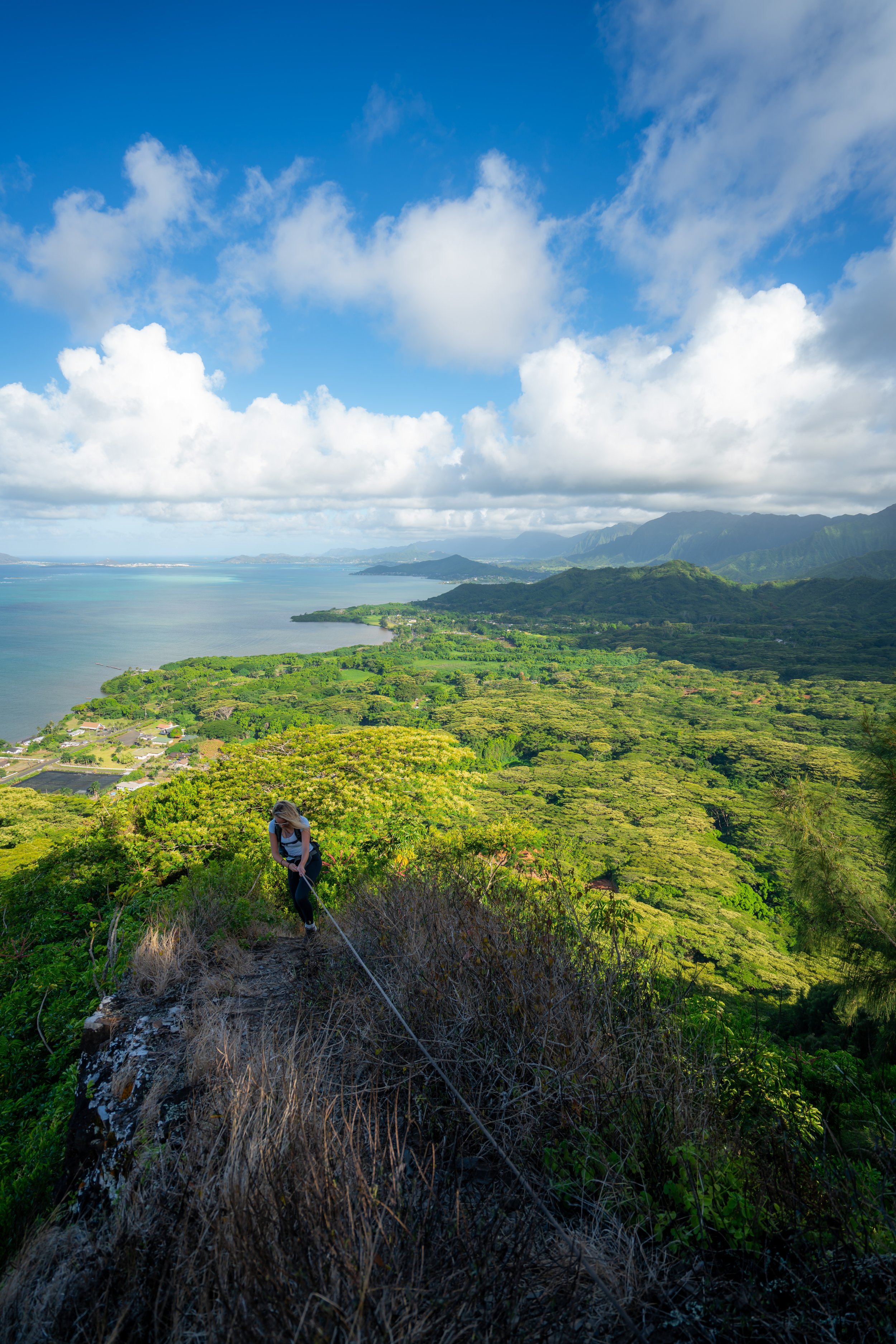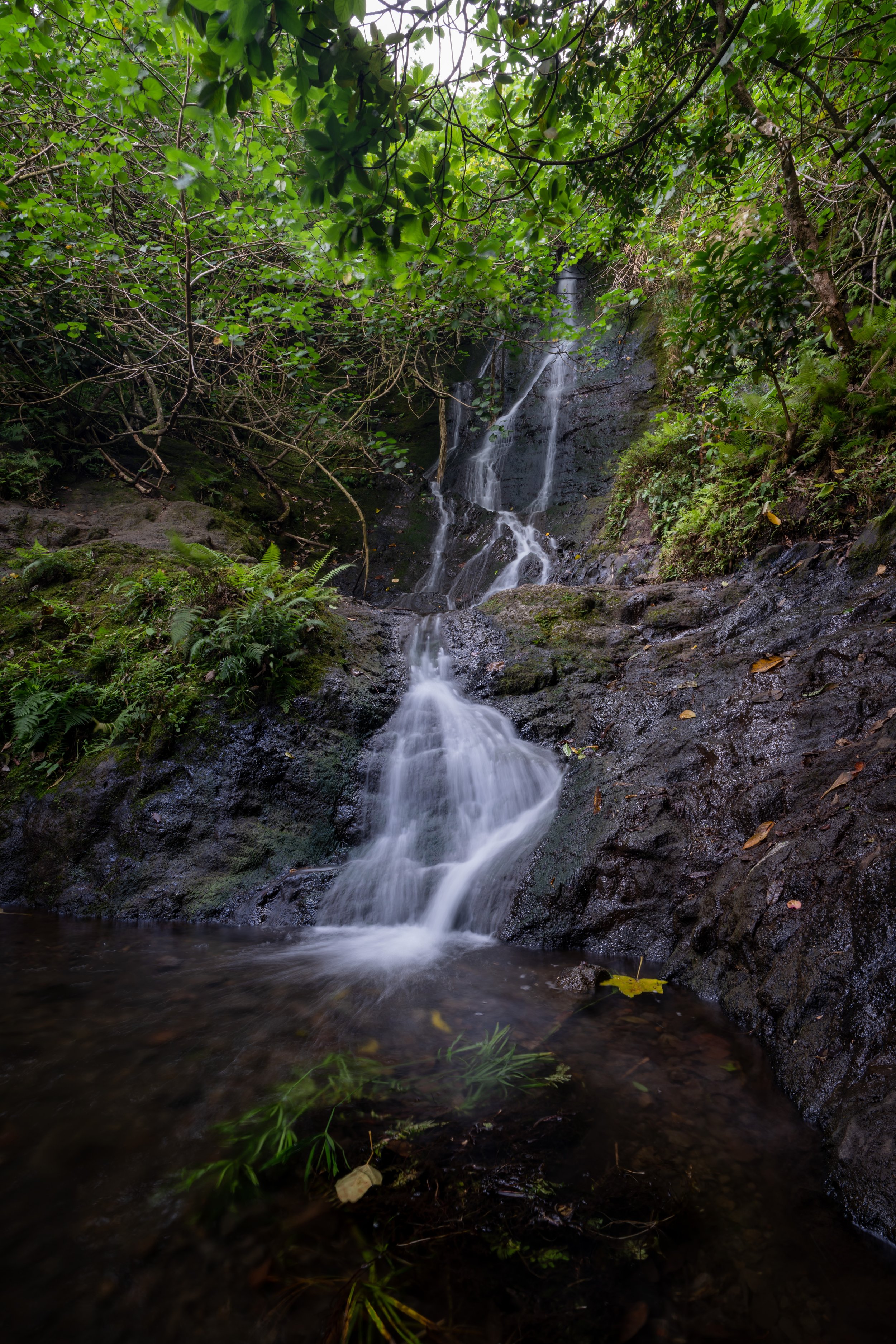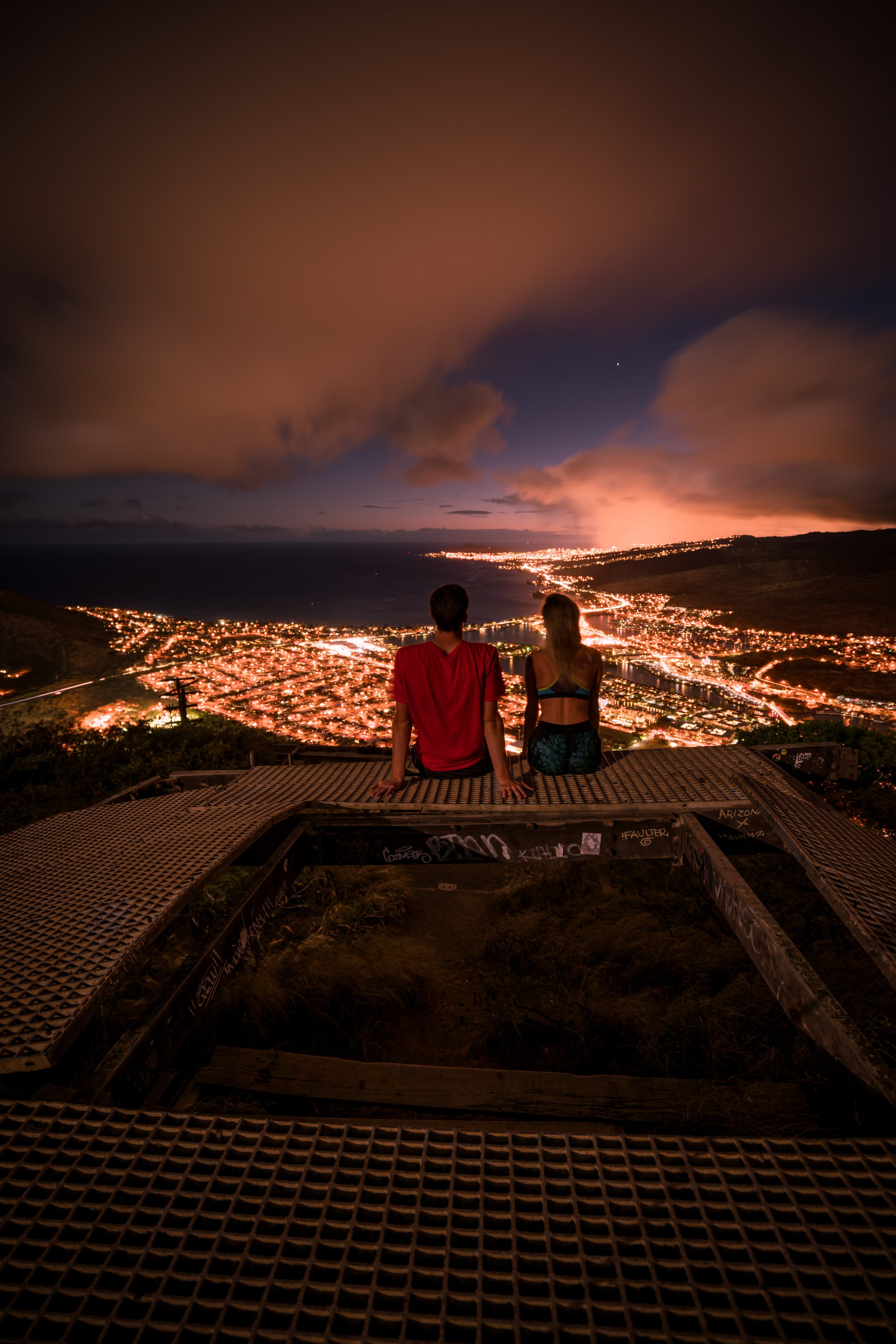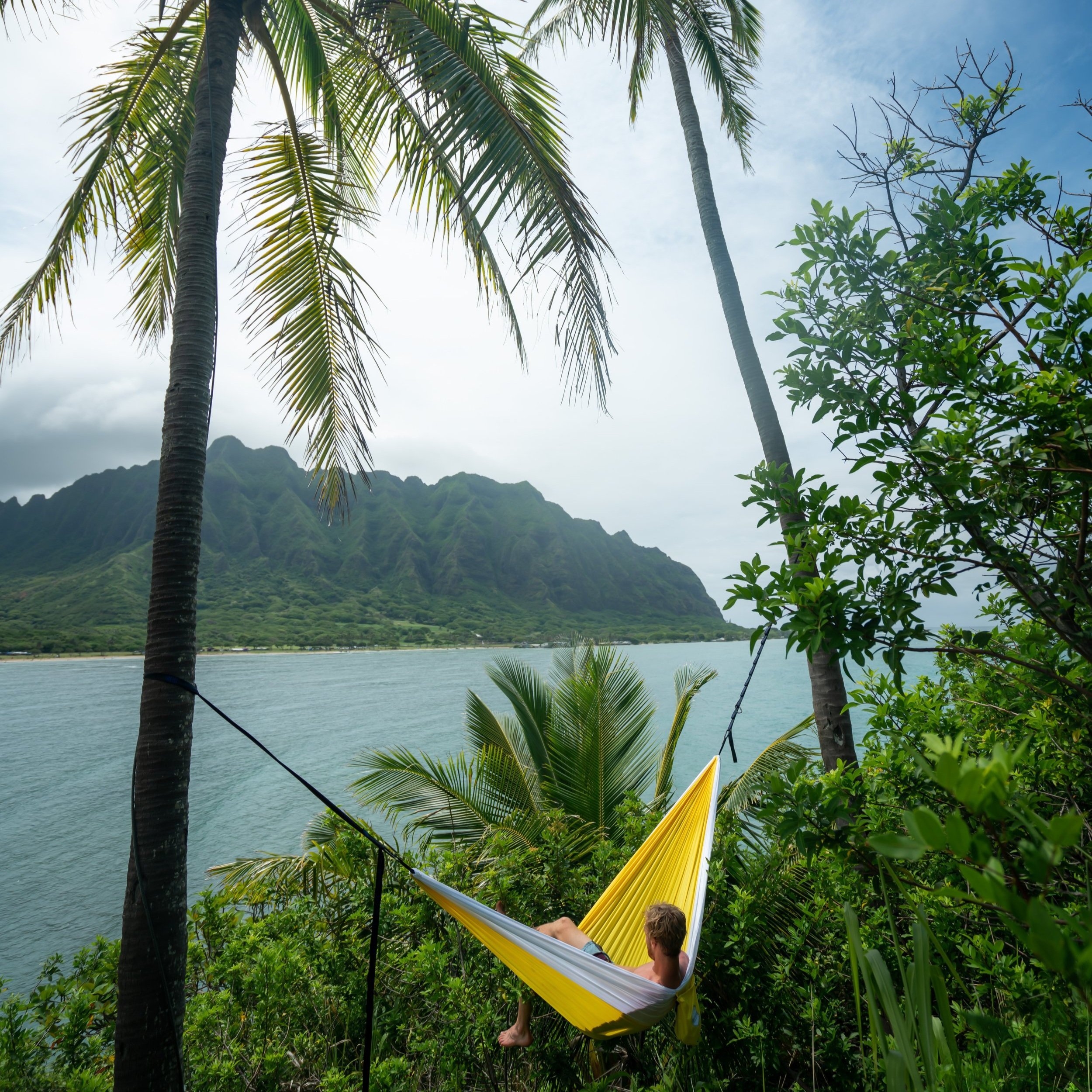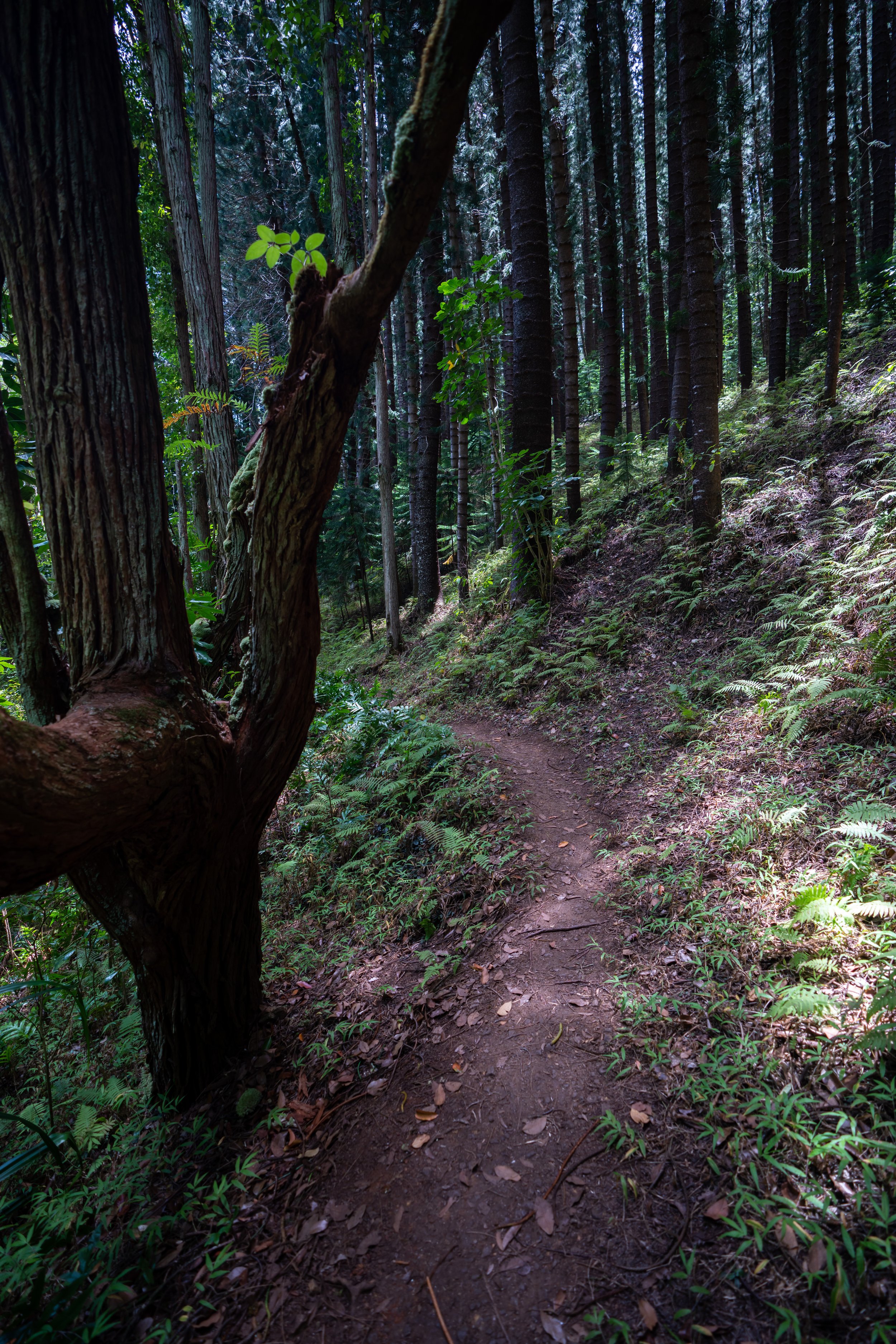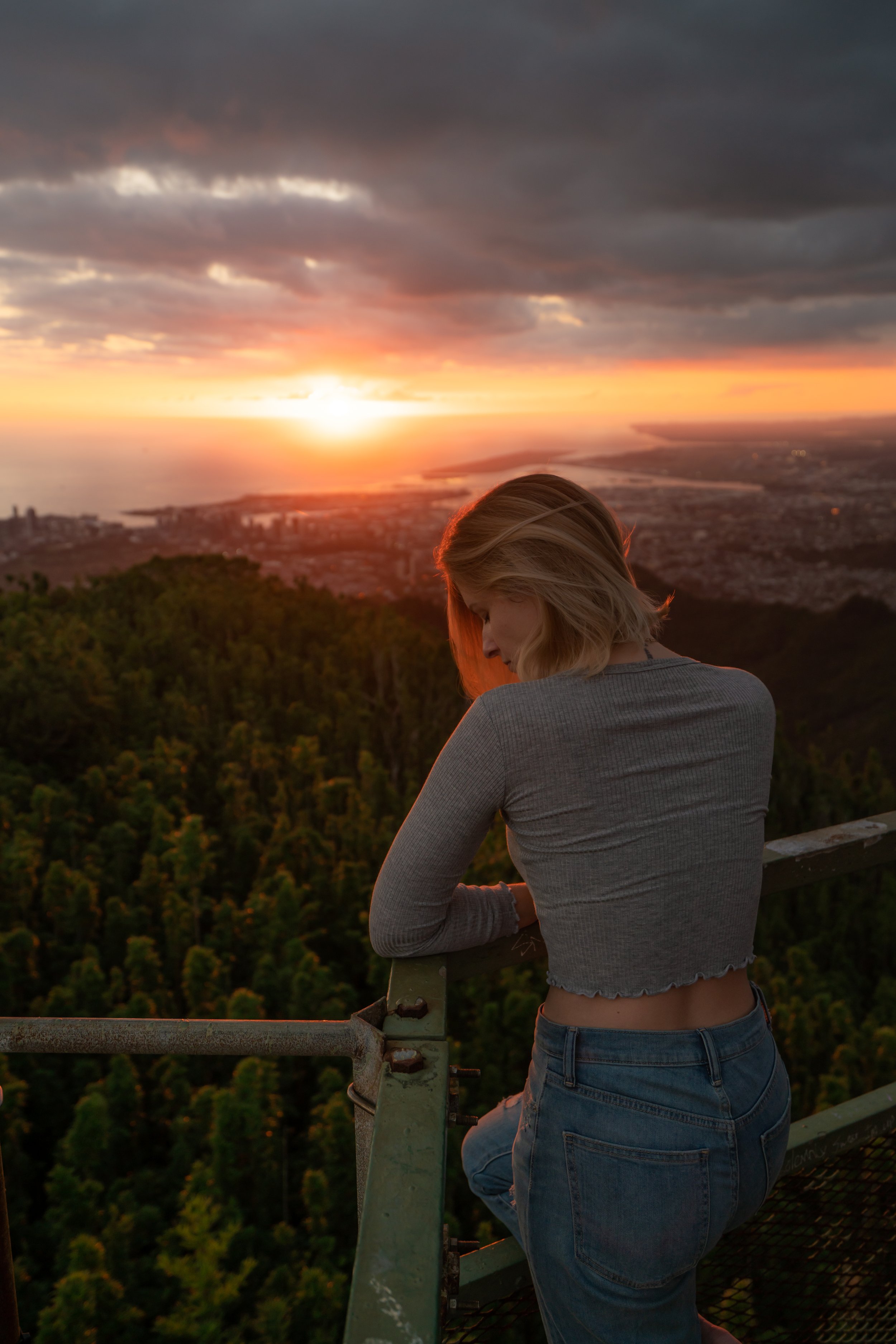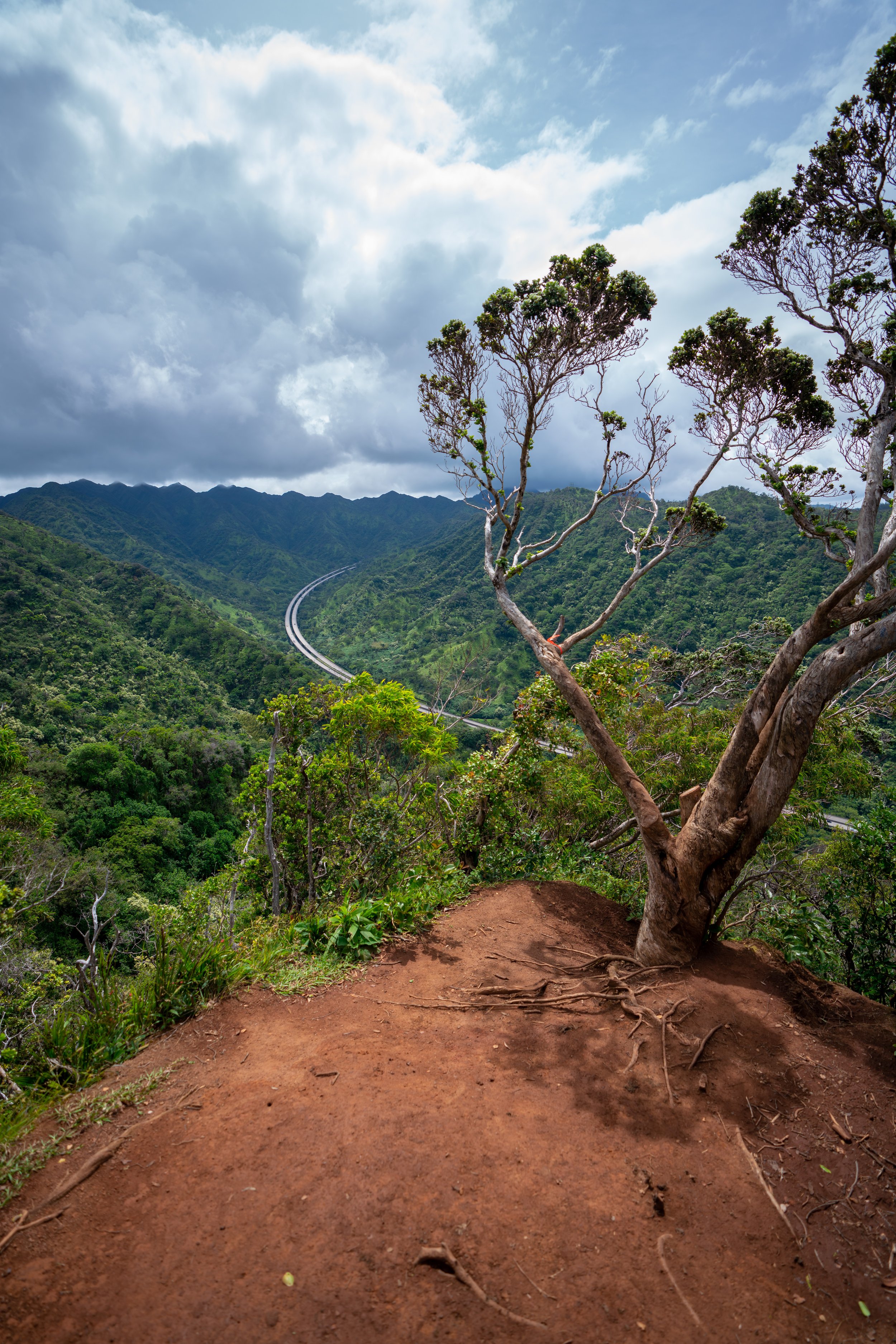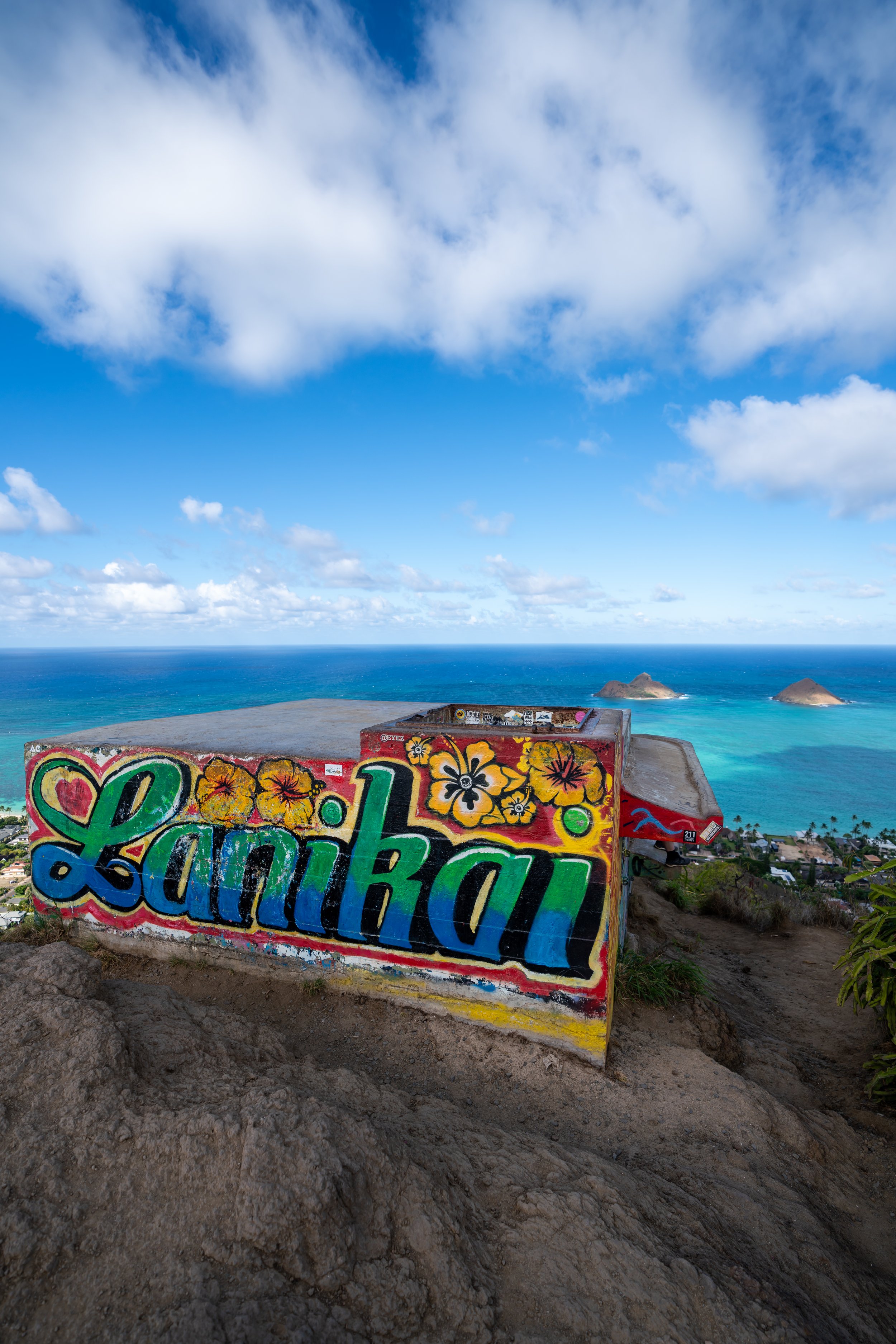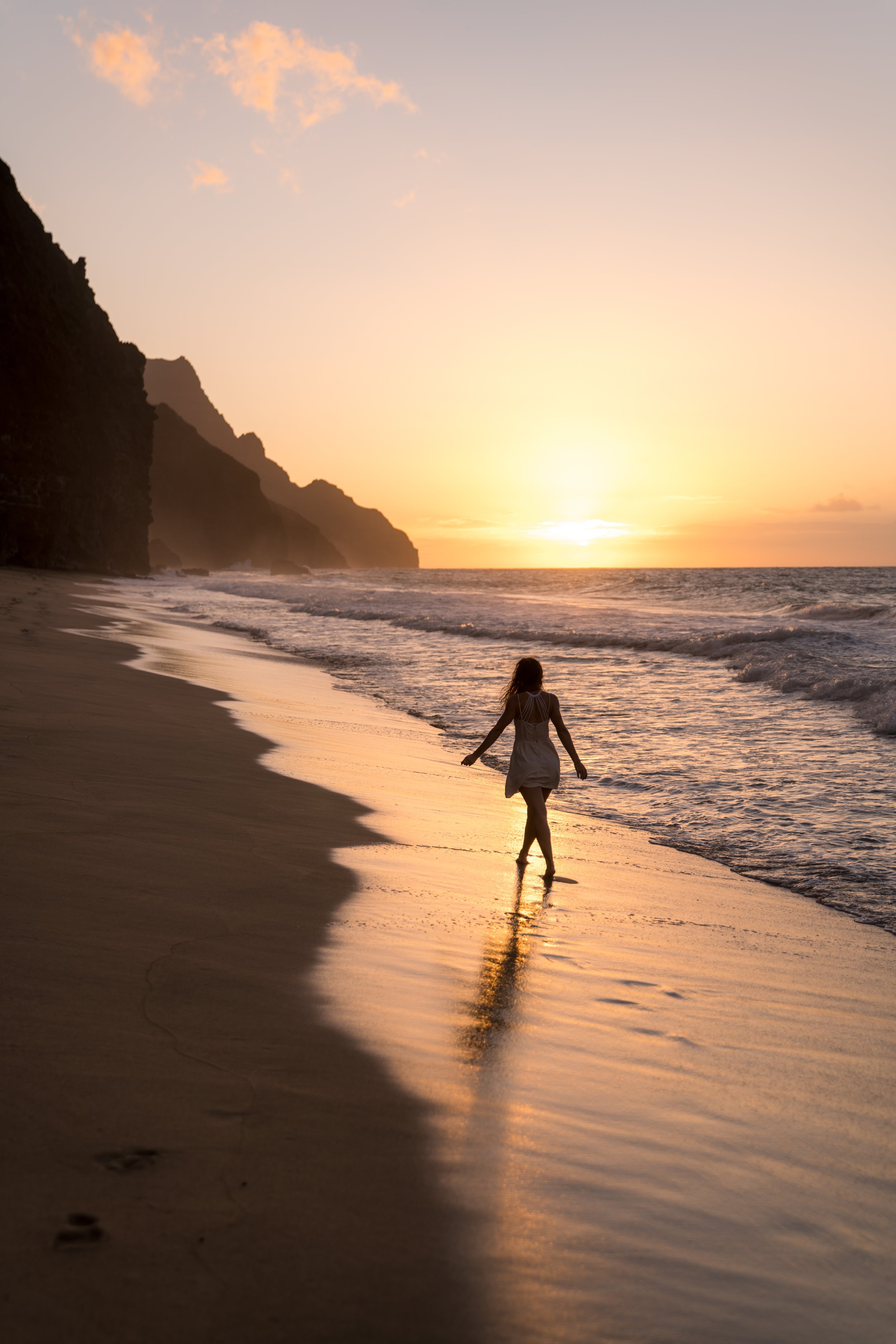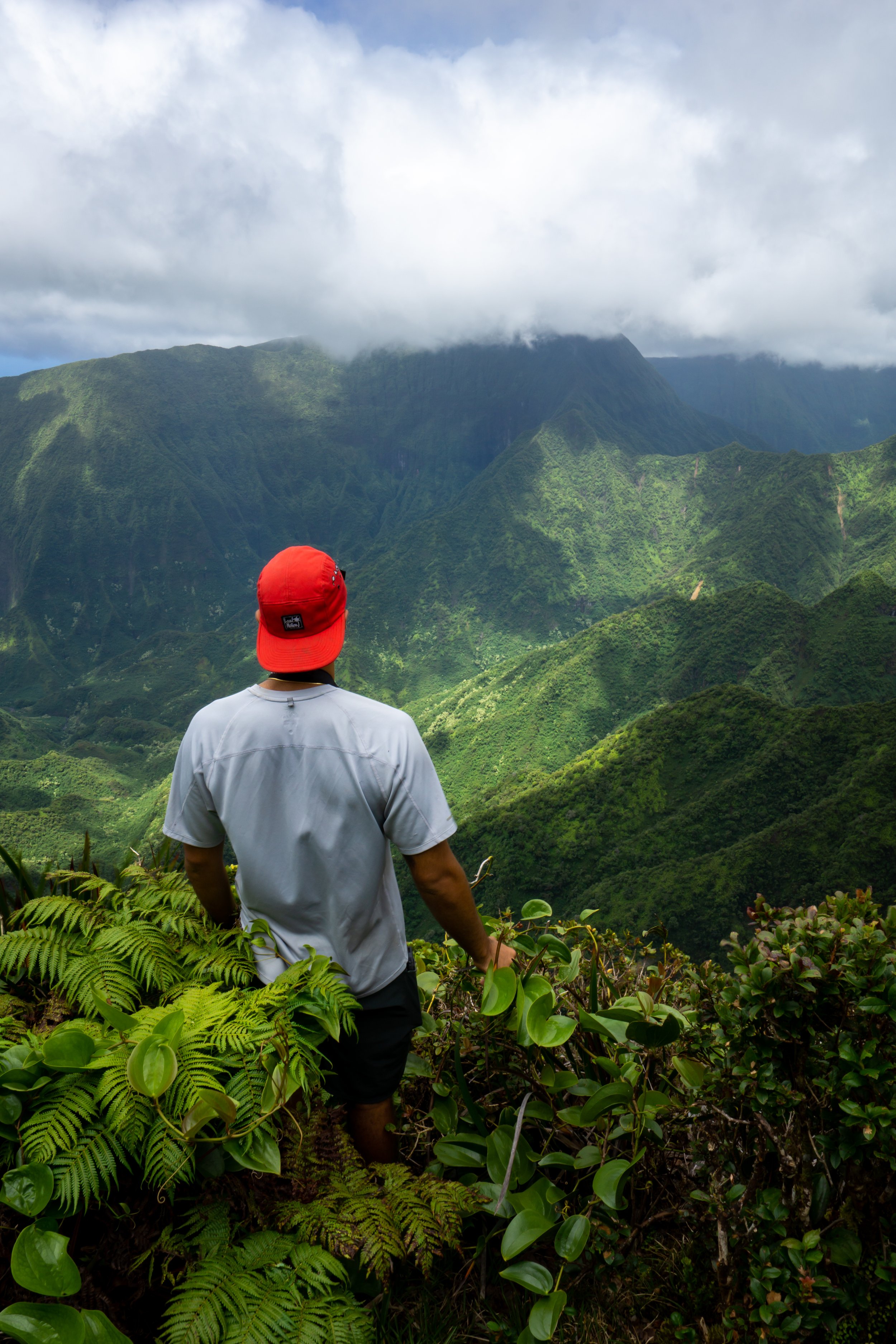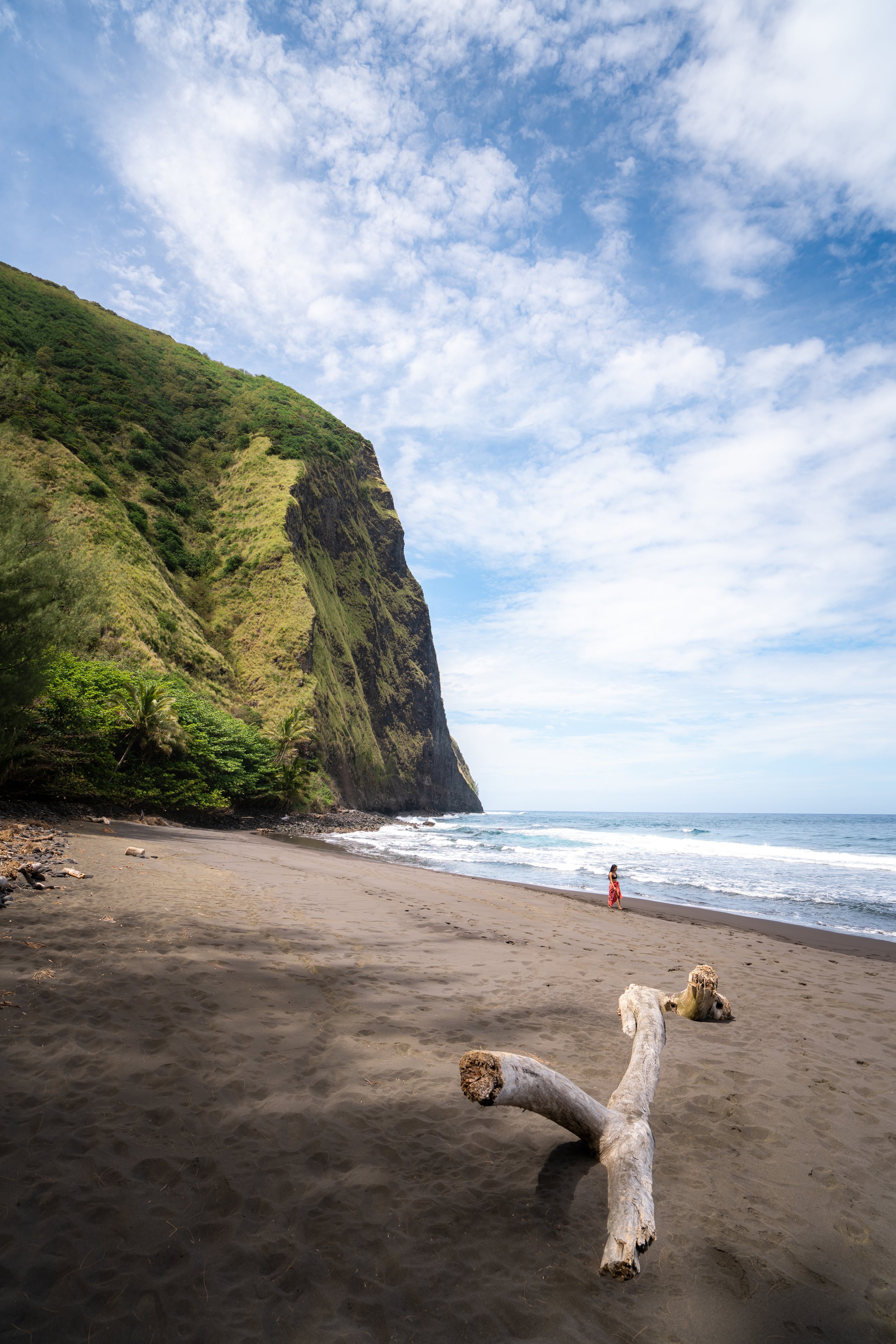10 Best Ridge Hikes on Oʻahu, Hawaiʻi
Generally speaking, hiking on Oʻahu can either be categorized as a ridge or a waterfall hike.
That being said, take it from myself, who has hiked most of everything there is on the island, to tell you that what you see on social media or other websites is not necessarily the best ridge hikes on Oʻahu.
That’s because the following list represents the true best ridge hikes on Oʻahu, without regard to difficulty, distance, elevation gain, permits, accessibility, etc. They are simply the best for how beautiful they are, their effort-to-reward ratios, and how busy/ trafficked the trail is.
My Hawaiʻi Hiking Checklist
Osprey 3L Water Bladder - The Osprey 3L water bladder is the most universal hiking and backpacking water bladder on the market, and it’s my go-to because of the slide-off seal that allows it to be quickly filled from the top. Additionally, individual parts are easily replaceable, such as the bite valve.
Blister / Heel Protectors - I swear by these cheap, amazing heel protectors to prevent blisters for nearly every kind of hiking and backpacking that I do!
Black Diamond Headlamp - Personally, I recommend the Black Diamond Storm because it is one of the brightest, lightest, and longest-lasting headlamps on the market—and trust me, the weight-to-battery-life ratio really does matter!
Hiking / Trail Running Shoes - Depending on the type of trail, I prefer to use either the Keen Targhee for longer, more rugged hiking or the HOKA Zinal Trail-Running Shoe for lighter, less intense trails. In either case, both have been amazing to me for many years across countless environments, and both can be found in men’s and women’s sizes. - (Men’s Keen / Women’s Keen) (Men’s HOKA / Women’s HOKA)
Waterproof Rain Shell - You never know when it may rain, and I’ve learned over the years that a rain shell is far better than a rain jacket. By this, I mean that it’s best to have something that the water will roll right off of, which is why I recommend the Patagonia Torrentshell 3L available in both men’s and women’s sizes.
High SPF Sunscreen - Packing high-SPF sunscreen is a must for long days outside!
10 Best Ridge Hikes on Oʻahu
With the exception of the first two, the following list is written in no particular order of best or worst, as it’s truly too difficult to rank all of Oʻahu’s stunning ridge hikes!
1. Poamoho Trail [4x4 Access Only]
Distance: 7.0 miles / 11.3 km
Without a doubt, the Poamoho Trail is the best ridge hike on Oʻahu.
However, in order to hike Poamoho, know that the trail’s access requires some planning if you’re going to make it happen.
By this, I mean that Poamoho is accessible by 4WD and permit only. You can read all about the details in order to make this amazing hike possible in my separate post, but if you do all of the planning to make it happen, the summit views on a clear day will not disappoint!
Read My Separate Post: Poamoho Trail
2. Kuliʻouʻou Ridge Trail
Distance: 4.7 miles / 7.6 km
On a clear morning, the effort-to-reward ratio on Kuliʻouʻou Ridge makes for one of the best sunrise hikes on the island.
This is because Kuliʻouʻou is roughly 2.4 miles (3.9 km) each way, which is a considerably short distance to reach the Koʻolau Summit, as other trails on this list require much more effort to reach the same or similar reward.
Personally, I prefer to hike Kuliʻouʻou for sunrise, but if you’re going to go for sunrise, start early! 1,650 ft. (503 m) of elevation gain reads much easier here than it is when you’re climbing up in the dark.
Read My Separate Post: Kuliʻouʻou Ridge Trail
3. Puʻu Kōnāhuanui Ridge Trail (K1)
Distance: 8.2 miles / 13.2 km
Kōnāhuanui is the tallest peak in the Koʻolau Mountain Range, but even though it’s the highest, it is nowhere near the hardest hike on this list.
That’s because the trailhead itself starts high on a ridge cutting out about half of the total elevation gain in order to reach the 3,150 ft. (960 m) summit.
All said, Kōnāhuanui is one of my personal favorites because of how beautiful the summit area is between K2 and K1 on a clear day. However, know that getting a clear day on the summit is not an easy thing to achieve, but to have the best luck, hike early and only if the weather looks good. The later in the day that you begin hiking, the higher the chances are that the clouds will move in.
Read My Separate Post: Puʻu Kōnāhuanui Trail (K1)
4. Mt. Kaʻala Trail (Tallest Peak on Oʻahu)
Distance: 7.1 miles / 11.4 km
Mt. Kaʻala is the tallest peak on Oʻahu at 4,025 ft. (1,227 m), but even though it’s the highest, it’s not even close to the hardest, as Mt. Kaʻala is more of a gentle giant than an overly strenuous trail.
Regardless, just like Kōnāhuanui mentioned above, my overall recommendation is to hike Mt. Kaʻala on a clear day because if so, you will get to see expansive views of Waiʻanae and Mākaha to the west, and the entire North Shore from the summit!
Read My Separate Post: Mt. Kaʻala Trail
5. Waʻahila Ridge Trail (Mt. Olympus)
Distance: 5.6 miles / 9.0 km
Personally, I think that the Waʻahila Ridge Trail to Mt. Olympus is one of the best ridge hikes on Oʻahu because of how conveniently located it is to Honolulu (Waikīkī) and because of how “relatively easy” it is to reach the Koʻolau Summit compared to other nearby trails, like Kaʻau Crater.
The reason why I mentioned Kaʻau Crater is because Mt. Olympus is also my preferred trail in order to see the crater being that it’s far easier than the traditional Kaʻau Crater hike through Pālolo Valley.
Furthermore, if you want to start at Waʻahila and end at Kaʻau Crater, it is also possible to loop back to the Waʻahila Trailhead via the bus system. However, the bus up to the Waʻahila Trailhead doesn’t run as often as other routes, so be prepared to be patient if this is an adventure that you’re considering.
All said, this challenging loop is definitely not for all hikers, especially the Koʻolau Summit portion, but if you’re going to hike the Waʻahila to Kaʻau Crater loop, never park inside of the Waʻahila gate, so that you don’t get your car locked in.
Read My Separate Post: Waʻahila Ridge Trail (Mt. Olympus)
6. Puʻu Manamana Loop Trail
Distance (Full Loop): 5.3 miles / 8.5 km
The Puʻu Manamana Loop is one of my favorites because of how much you get to see on this one relatively short hike.
Puʻu Manamana starts out on the popular Crouching Lion Trail, which I like do for sunrise, followed by a beautiful ridge hike above Kahana Bay. Then, the trail descends into a place called Hidden Valley, where you get to stand on top of the tallest waterfall on the island before finishing on another panoramic ridge as you come down on the other side (Kahekili Ridge).
All said, the Puʻu Manamana Trail is absolutely not for beginners or anyone afraid of heights. However, if you think that you’re up for the challenge, I personally think that Puʻu Manamana is one of the best east Oʻahu adventures!
Read My Separate Post: Puʻu Manamana Loop Trail
7. Pali Notches Trail
Distance: 0.8 miles / 1.3 km
The effort-to-reward ratio on the Pali Notches cannot be beat!
However, the reason why I think trails like Poamoho are better is because the Pali Notches Trail is short, which can make it very popular, especially around sunset and sunrise.
In any case, don’t use the short distance to judge difficulty. The Pali Notches Trail has many high-exposure sections, as you will literally have to scramble up a cliff side to make it all of the locations that you see in beautiful photos.
To this point, it’s important to be aware that the Pali Notches hike is NOT an established or maintained trail, and you accept all potential consequences should you choose to hike a closed trail.
Read My Separate Post: Pali Notches Trail
8. Kaʻena Point Pillbox Trail
Distance (West Side): 2.1 miles / 3.4 km
Distance (North Shore): 2.4 miles / 3.9 km
Of all the trails on this list, Kaʻena Point is definitely the odd one out because the vast majority of the hike is not on a ridge until the very end.
However, Kaʻena Point is on this list because of the option to extend the coastal trail from either direction by hiking up the ridge at the end on Kaʻena Point Pillbox Trail to the WWII-era bunker above Kaʻena Point, which makes for one of the best year-round sunset hikes on Oʻahu!
That said, both the North and West Kaʻena Point Trails are very similar coastal trails, but in many ways, they could not be more different from one another. Therefore, I highly recommend reading my side-by-side comparison at the beginning of either article linked below to learn more about which route sounds most interesting to you.
Read My Separate Posts: Kaʻena Point (North Shore) / Kaʻena Point (West Side)
9. Mānana Ridge Trail
Distance: 10.4 miles / 16.7 km
Mānana Ridge is the longest and hardest hike on this list, which is only somewhat related to the long distance.
I say that Mānana is the hardest because of all of the constant elevation gains and losses over the course of the trail.
That aside, the views from the upper elevations on the ridge and summit itself are spectacular, and since it’s such a long trail, the ridge is not a busy hike by any means compared to others on this list, such as Kuliʻouʻou and Wiliwilinui.
Read My Separate Post: Mānana Ridge Trail
10. Wiliwilinui Ridge Trail
Distance: 4.7 miles / 7.6 km
Wiliwilinui Ridge made my top 10 list because it’s one of the 'easier' ridge hikes on the island to reach the Koʻolau Summit, similar to Kuliʻouʻou Ridge listed above.
Also, like Kōnāhuanui, the trailhead starts high on the ridge, making the total elevation gain significantly easier compared to a hike that starts from a valley floor.
Overall, Wiliwilinui Ridge is conveniently located close to Waikīkī, but the one good, as well as bad thing about the hike, is that parking is limited at the trailhead.
Since Wiliwilinui begins in a private residential neighborhood, the security has the ability to enforce the amount of cars allowed up at one time based on passes that they hand out. This obviously makes the hike less crowded, but it’s best to start early in the day, as well as avoid weekends and holidays, so that you aren’t turned away.
Read My Separate Post: Wiliwilinui Ridge Trail
Bonus Hike
It’s hard to keep this list to just 10, so here’s my number 11.
11. Mauʻumae Ridge Trail (Puʻu Lanipō)
Distance: 6.8 miles / 10.9 km
The Mauʻumae Ridge Trail to Puʻu Lanipō is one of my southern Koʻolau favorites because of how fast the panoramic views start within five minutes of leaving the trailhead!
This means that the ridge can make for a short sunset hike out to the initial viewpoint or a longer day hike up the ridge to the Koʻolau Summit.
The one thing that sets Mauʻumae Ridge back in my mind is the large elevation loss/ gain after the initial viewpoint. It’s something that’s annoying both ways if you choose to hike the entire ridge, but the views from the top easily make up for this annoying inconvenience.
All said, the same as I mentioned about Waʻahila Ridge, goes for Mauʻumae. The Puʻu Lanipō hike is the other neighboring trail alongside Kaʻau Crater, and it’s also a much easier way to see the crater than the popular route through Pālolo Valley.
Although my preferred route to get to Kaʻau is still Waʻahila, I thought it was something worth mentioning here as well.
Read My Separate Post: Mauʻumae Ridge Trail (Puʻu Lanipō)
Additional Hawaiʻi Gear
In addition to the hiking checklist that I have above, some ridge hikes on this list can be much more comfortably hiked with pants because of all the overgrowth. Hikes that I would absolutely wear pants on are Puʻu Kōnāhuanui, Puʻu Manamana, Mānana, and Mauʻumae Ridge, as all four of these trails have sections where the Uluhe ferns will cut into your legs making the hike much less enjoyable.
The pants below are my recommendations that hold up the best with the overgrowth here in Hawaiʻi, but with any hiking pants that need to be durable, make sure that they are at or near 100% nylon. This is really the most important factor!
Native Hawaiian Plants on Oʻahu Trails
On most of my Hawaiʻi posts I talk about what native Hawaiian plants you can expect to see on various trails, but here, the one thing that I want to encourage on this post is responsibility, as many of our native Hawaiian plants are declining or are already federally listed under the endangered species act.
Please do your part when hiking any one of these trails to minimize your impact. Thank you!
Read My Separate Post: Native Hawaiian Plant Guide
More Oʻahu Adventures
If you’re interested in reading about some more amazing Oʻahu adventures, check out my separate posts below!
Best Hotels & Restaurants in Waikīkī
If you’re trying to decided where to stay on Oʻahu, check out my top 10 list for the best resorts and restaurants in Waikīkī.
I break down what makes one hotel a better choice over another, so that you can find the best fit for your stay on the island.
Read My Separate Post: Best Waikīkī Hotels & Restaurants
HNL Airport-Hotel Shuttle
Prices on ride-share apps like Uber/ Lyft cannot beat the price of booking your hotel shuttle prior to arrival. I say this because there are additional fees for ride-share airport pick-ups at Honolulu Airport (HNL), which is why I recommend booking your transportation in advance using the options below.
Additionally, the last option below will go as far as the Ko ʻOlina Resorts on the West Side and Turtle Bay on Oʻahu’s North Shore!
Best Way to Book Rental Cars!
I travel quite a bit, and I know firsthand that finding a good rental car deal can be a challenge, but that’s why I recommend comparing all of your options with Discover Cars.
In short, Discover Cars is a well-known, reputable business that allows you to search for the best deal across companies, and they have the best full-refund cancellation policy I’ve ever seen, valid up to 72, or sometimes even 48, hours prior to your reservation!
Book Here: Discover Cars
Visiting Other Islands
If you are visiting Oʻahu or heading to another island, check out some of my personal recommendations for Oʻahu, Maui, Kauaʻi, Molokai, Lānaʻi, and Hawaiʻi Island (Big Island) in these separate posts.
If you’re trying to decide which island is right for your visit, check out my overview about each island in the post below.
Read My Separate Post: What is the Best Hawaiian Island to Visit?
What is the Best Time of Year to Visit Hawaiʻi?
The weather in Hawaiʻi can often appear to be warm and beautiful throughout the year, but in my experience, there is a lot more to consider when planning what time of year to visit the islands, such as what island you are considering, what sides of each island do you plan to stay, what activities are you most interested in, the wildlife, and countless other nuanced variables that can all impact the type of trip you can expect to have.
For these reasons, I highly recommend reading through my separate article to not only understand my thoughts regarding the best time of year to come to Hawaiʻi but also what you need to consider based on the time of year that you plan to visit.
Read My Separate Post: What is the Best Time of Year to Visit Hawaiʻi?
10 Best Tours & Excursions on Oʻahu
There are a lot of different tour options to choose from on Oʻahu, but to make it easier to decide, I made a list of my favorite tours because some things simply are better with a local guide!
Read My Separate Post: Best Tours on Oʻahu
Safety
All hikes in Hawaiʻi should not be compared to trails outside of the islands, and hikers should exercise due caution on every adventure, given that many are extremely dangerous.
By this, I mean that Hawaiʻi is known for hot, humid weather, steep, dramatic, and unstable cliffs, and flash floods, which can occur without warning. Therefore, it is important that you check the local forecast, understand the physical condition of your entire group, and pack sufficient food and water before attempting any adventure.
Disclaimer
All information provided on this blog is for informational purposes only and is not intended to be a substitute for information or advice from qualified professionals or managing agencies.
Noah Lang Photography LLC makes no representations or warranties regarding the accuracy or completeness of the information provided here, and readers should use their own discretion, judgement, and seek professional advice where it is appropriate.
Furthermore, Noah Lang Photography LLC shall not be held responsible for any injuries, lost individuals, or legal issues arising from the use of information provided on this website, and if applicable, the above safety disclaimer should be referenced to provide a generic overview of the risks involved.
All said, the content on this blog is for the sole use of Noah Lang Photography LLC, and unauthorized use or reproduction of this content is strictly prohibited.
Disclosure
This post is not sponsored.
However, some of the links in this post are affiliate links, which means that I may earn a small commission if a purchase is made through one of those links. This commission comes at no additional cost to you, and I only recommend products that I personally use and believe will add value to my readers. Thank you for your support, which enables me to continue creating more!
To read the full privacy policy, click here.

About This Blog
Noah Lang Photography, also known as @noahawaii, is 100% reader-supported!
I do not accept guest articles or sponsored content of any kind on my blog, which is why, if you enjoy the outdoor and travel content I create, please consider buying me a coffee!
I appreciate your support, which helps me continue to keep this blog alive!











